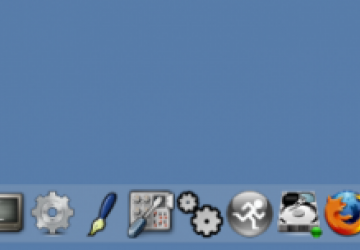Tiny Core Linux 3.6 adds GUI installer

With the release of version 3.6, the Tiny Core crew have added a GUI method for hard disk installation. As I have, on previous occasions, banged on about this omission, I thought I'd take a look.
In the past, I've had a love/hate relationship TinyCore Linux distribution. On the one hand, it sports some amazing technology. It's a lightweight distribution based on a custom core. By default, it gives you a basic desktop with a dock along the bottom and enough GUI tools to begin adding applications and making other customizations. See our overview of Tiny Core circa 3.3 for more details.
The fly in the ointment was that although it was easy to add applications, making persistent changes and performing a hard disk installation has always been for experts only. Just to clarify: There's nothing inherently wrong with HD installation being a command line affair that requires quite a lot of Linux knowledge and extensive references to the documentation. In the past, this use case (hard disk installation) isn't one that the developers chose to focus on. However, to me, and some other admirers of what Tiny Core has to offer, it seemed like missed opportunity. There is a class of user who has experience with Linux while not being guru enough to do things like installing GRUB manually. As soon as I first came across Tiny Core, I felt sure that this was the type of user who could put tiny core to good use in order to quickly put together minimalist custom Linux desktops.
So, what does the long-wished-for installer actually look like? First of all, although it's a GUI application, it's not the Ubuntu installer, and it doesn't try to be. Along the way, the user has to answer some questions and specify boot options. If you've not used Tiny Core before, you will have to hit the documentation to familiarize yourself with some of the concepts. For example, Tiny Core has a number of different boot modes. These control what aspects of the operating system are persistent and specify the balance of how much of the OS runs directly in RAM. One snag, for newcomers, is that the documentation on the website isn't yet fully in sync with the new installer. However, new users should be able to glean what they need from the older documentation.
The new installer.
The installer can do most of the work of installing Tiny core to either an existing partition or a new partition that encompasses the entire disk. Obviously, a more complex setup might require adding GParted via the package manager and setting things up from there before beginning to install.
If you need to create desktops like this, Tiny Core is worth investigating. For that matter, there's quite a lot of scope for installing different WMs. (note: this is a shot of 3.7 RC).
On the whole, I think that Tiny Core has now reached the stage where an experienced computer user with little or no Linux experience, could be trained to deploy it. I always thought that Tiny Core had the potential to fill a useful niche, and the addition of a GUI installer now makes it accessible to a broader range of users.
The Tiny Core website.
The release candidates page.










